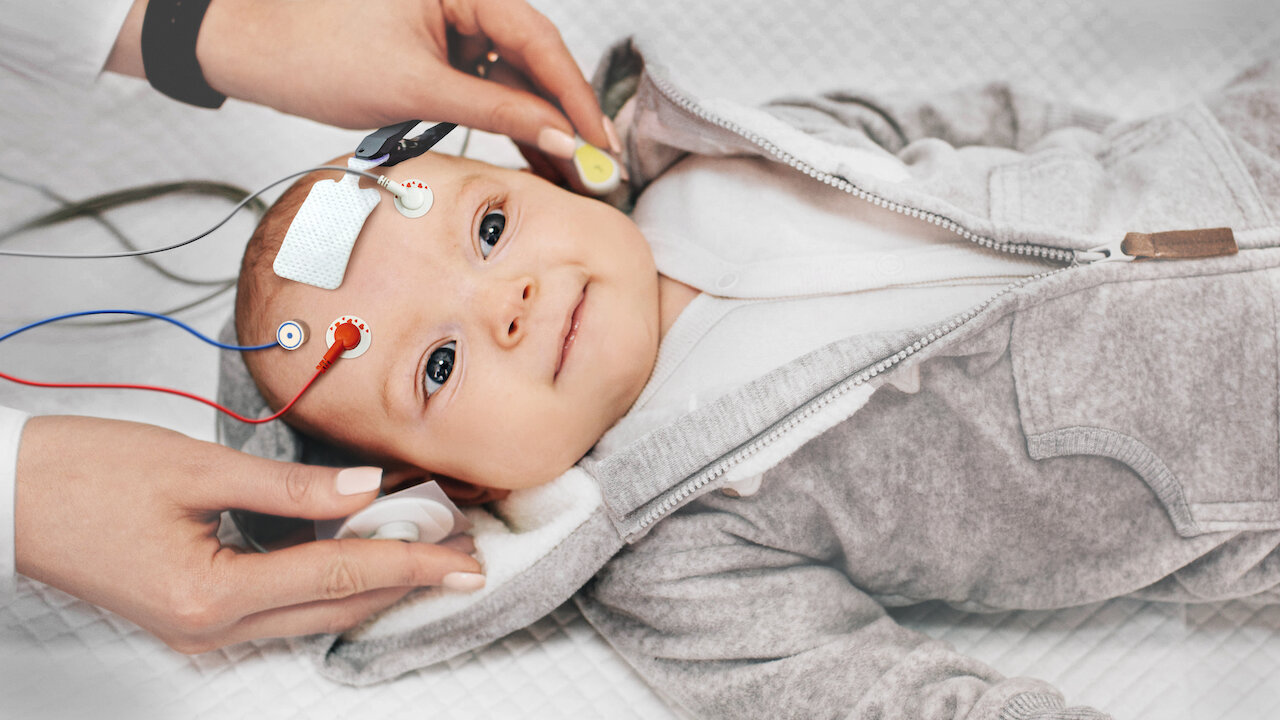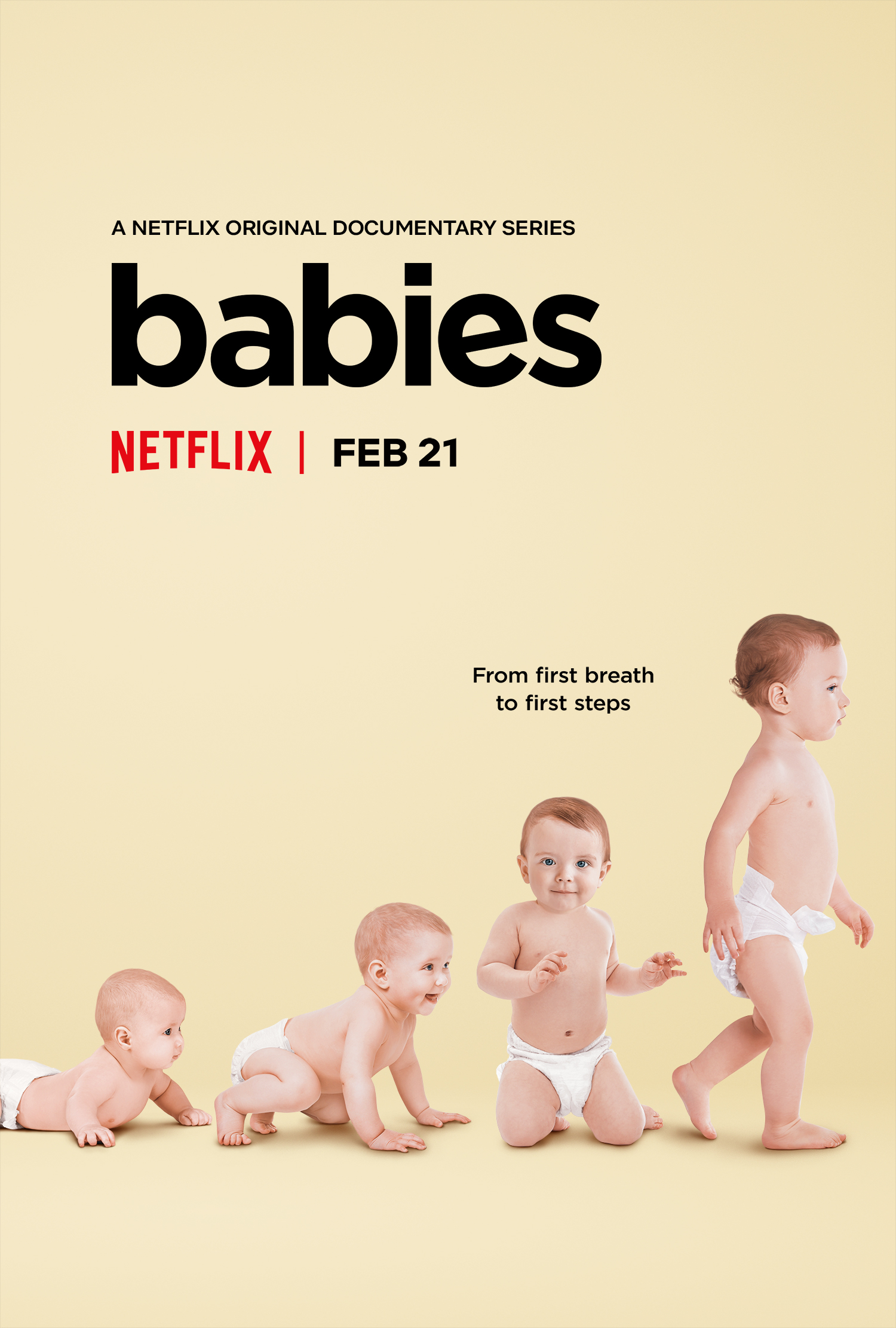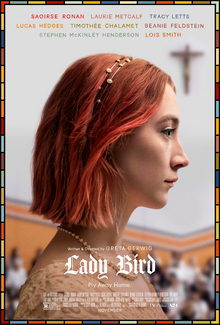

Are you curious about how a human being develops starting from birth? The time you studied the world most intensively, was when you were a baby. You probably don’t remember much of that period, when everything around you was new and learning was taking place at an incredible speed. To find out how all that happened, and what skills you acquired in the process of growing up, you can watch Netflix’s docuseries Babies, released in February 2020.
Heart-warming and fascinating, Babies presents snippets of research on how children learn and start to understand their environment in their first year of life. It covers topics from bonding with parents to the role of nutrition and more. The series consists of two seasons of six episodes each, with a duration of fifty minutes per episode. It combines scenes from the daily lives of fifteen babies and their families, while researchers explain the science behind their developmental milestones. The content of the series is varied and the approach is interdisciplinary: growth is tackled from multiple perspectives and scientists from different fields present their findings in order to paint a complete picture of a baby’s experience.
One of the most unique points in this show is filming the interaction between babies and their families. Students and developmental psychology enthusiasts have the chance to see exactly how children of different ages behave and how they are taken care of by their parents. Since this aspect is often missing when auditing lectures or reading articles on child development, watching the series is an opportunity to see real life examples of theories you might have come across while taking a developmental psychology course. However, if you were expecting a very coherent story, you might be disappointed because the order of the information is not chronological. As the episodes are organized by topics, babies of different ages are shown in an alternating manner throughout the show, which makes it harder to keep track of the distinct pieces of information regarding a certain age. While this fragmented structure takes away from the flow of the episodes, it makes it easier for those who are only interested in a particular topic and would want to skip certain parts. One thing to note, though, is that the series is not too densely packed with information. This makes watching a relaxing and fun experience, but it could also seem too light for those who want to delve deeper in the subject. All in all, it is an excellent opportunity to hear about domains of research, get acquainted with renowned scientists and learn about their research questions. After watching this adorable and heartfelt story of life’s beginnings, you are better equipped to search up more of what you are interested in.
Babies definitely has the potential to inspire and fascinate. Its main message is that babies know more about the world and figure things out earlier than it might appear at first sight. Did you know that babies are able to recognize faces just as well as adults? The series shows multiple babies being placed in an fMRI, which demonstrated that the areas activated in the brains of babies when seeing pictures of human faces correspond to the ones activated in adult brains. While babies are uniquely equipped to make sense of the world around them and they actively explore it with an unwearied determination, there are ways in which their environment can be modified to enhance their learning, as you will find out from the series. Sometimes your intuitions about childcare and development will be confirmed by science, other times you will hear surprising news and this will whet your appetite to study more and ask further questions. As an example, the hormone oxytocin (also known as the cuddling hormone because it prompts people to seek connection with others and makes close interactions feel rewarding) is released by mothers while interacting with their baby and has a positive role in developing attachment relationships. An unexpected result of recent studies presented in the show is that mothers’ and fathers’ oxytocin levels rise to similar levels in the first months after birth, which indicates that merely taking care of a baby creates a very strong connection that determines changes at the biological level for the caregiver.
Whether you are interested in developmental psychology, neuroscience, education, or if you simply like babies, with this series you will have the chance to peek inside their fascinating minds. At the same time, you will get to see the clever and ingenious methods that scientists designed in order to answer fundamental questions about who we are, starting from the beginning of our lives.
Babies Is now available on Netflix.

Are you curious about how a human being develops starting from birth? The time you studied the world most intensively, was when you were a baby. You probably don’t remember much of that period, when everything around you was new and learning was taking place at an incredible speed. To find out how all that happened, and what skills you acquired in the process of growing up, you can watch Netflix’s docuseries Babies, released in February 2020.
Heart-warming and fascinating, Babies presents snippets of research on how children learn and start to understand their environment in their first year of life. It covers topics from bonding with parents to the role of nutrition and more. The series consists of two seasons of six episodes each, with a duration of fifty minutes per episode. It combines scenes from the daily lives of fifteen babies and their families, while researchers explain the science behind their developmental milestones. The content of the series is varied and the approach is interdisciplinary: growth is tackled from multiple perspectives and scientists from different fields present their findings in order to paint a complete picture of a baby’s experience.
One of the most unique points in this show is filming the interaction between babies and their families. Students and developmental psychology enthusiasts have the chance to see exactly how children of different ages behave and how they are taken care of by their parents. Since this aspect is often missing when auditing lectures or reading articles on child development, watching the series is an opportunity to see real life examples of theories you might have come across while taking a developmental psychology course. However, if you were expecting a very coherent story, you might be disappointed because the order of the information is not chronological. As the episodes are organized by topics, babies of different ages are shown in an alternating manner throughout the show, which makes it harder to keep track of the distinct pieces of information regarding a certain age. While this fragmented structure takes away from the flow of the episodes, it makes it easier for those who are only interested in a particular topic and would want to skip certain parts. One thing to note, though, is that the series is not too densely packed with information. This makes watching a relaxing and fun experience, but it could also seem too light for those who want to delve deeper in the subject. All in all, it is an excellent opportunity to hear about domains of research, get acquainted with renowned scientists and learn about their research questions. After watching this adorable and heartfelt story of life’s beginnings, you are better equipped to search up more of what you are interested in.
Babies definitely has the potential to inspire and fascinate. Its main message is that babies know more about the world and figure things out earlier than it might appear at first sight. Did you know that babies are able to recognize faces just as well as adults? The series shows multiple babies being placed in an fMRI, which demonstrated that the areas activated in the brains of babies when seeing pictures of human faces correspond to the ones activated in adult brains. While babies are uniquely equipped to make sense of the world around them and they actively explore it with an unwearied determination, there are ways in which their environment can be modified to enhance their learning, as you will find out from the series. Sometimes your intuitions about childcare and development will be confirmed by science, other times you will hear surprising news and this will whet your appetite to study more and ask further questions. As an example, the hormone oxytocin (also known as the cuddling hormone because it prompts people to seek connection with others and makes close interactions feel rewarding) is released by mothers while interacting with their baby and has a positive role in developing attachment relationships. An unexpected result of recent studies presented in the show is that mothers’ and fathers’ oxytocin levels rise to similar levels in the first months after birth, which indicates that merely taking care of a baby creates a very strong connection that determines changes at the biological level for the caregiver.
Whether you are interested in developmental psychology, neuroscience, education, or if you simply like babies, with this series you will have the chance to peek inside their fascinating minds. At the same time, you will get to see the clever and ingenious methods that scientists designed in order to answer fundamental questions about who we are, starting from the beginning of our lives.
Babies Is now available on Netflix.



